In the tech and software industry, product and service iterations happen incredibly quickly, which is inherent in the process of iterative design and fast software cycles. We’ve become accustomed to next-day changes and daily patch notes. However, nothing could have prepared us for the events that took place at OpenAI during the week of 20th – 24th November 2023. To try and understand what happened and where the future of OpenAI lies, it’s important to understand the history of OpenAI, the role of generative AI solutions like ChatGPT and Sam Altman’s role in the company.
![Is agi closer than we think - brilliance, betrayal & building tomorrow: the history of openai & its future (agi) [updated] Is agi closer than we think](https://opace.agency/wp-content/uploads/2023/11/Is-AGI-closer-than-we-think-1024x576.jpg)
How far away is Artificial General Intelligence? It may be closer than we think
Let’s dive into the where, the what, and the when, and chart OpenAI’s past and its turbulent road ahead. This is a road that could not only transform an entire industry but create one that has the potential to change humanity forever.
Editor’s Note [10.12.24]: Today, we’ve updated this article to reflect key developments and insights regarding OpenAI. Last updated in September 2024, this version includes new sections detailing Google’s Gemini, Microsoft’s collaboration with OpenAI using tools like Azure and Microsoft 365 Copilot. Additionally, the article has been expanded to highlight Meta’s LLaMA series and other prominent AI competitors, alongside general updates about OpenAI’s generative AI milestones such as ChatGPT’s release in 2022.
OpenAI’s history – A note about discovery, innovation, and implication
Before we get into the future of OpenAI and 2023’s ‘edit > undo’ in regards to CEO Sam Altman, let’s take a moment to focus on the work that has been done on ChatGPT, AI (Artificial Intelligence), AGI (Artificial General Intelligence) and the OpenAI’s history so far.
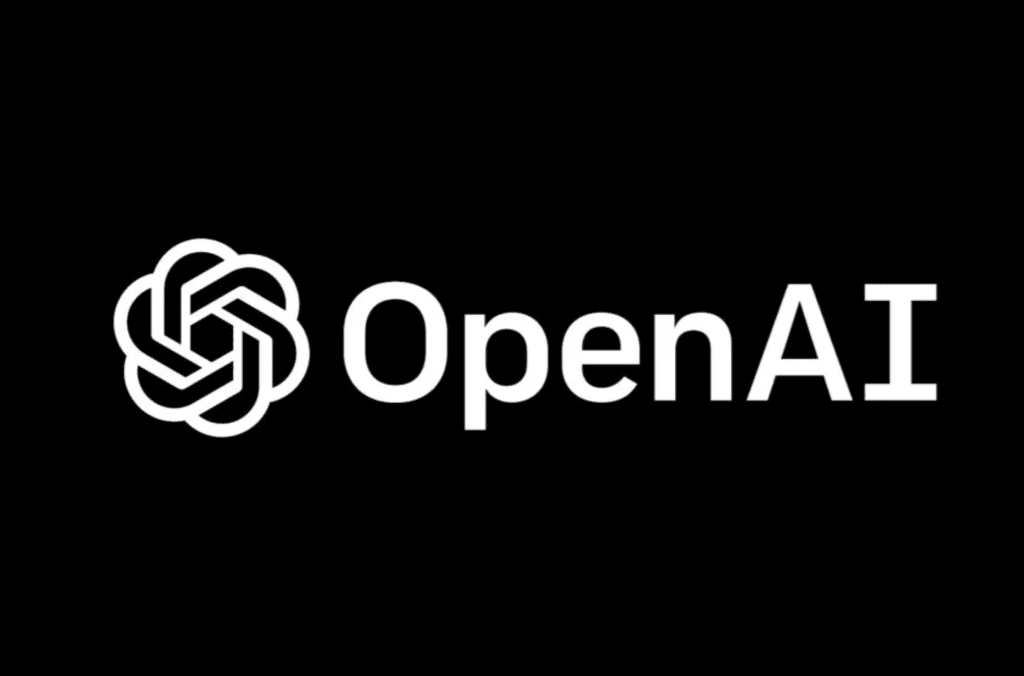
OpenAI – the history so far
It may sound dramatic and grandiose, but OpenAI’s products stand to completely transform nearly every industry, impacting every person on the planet.
Even those who aren’t glued to their screens asking ChatGPT questions like ‘what would you do if you were sentient?’, everyone on the planet may be impacted by the eventual evolution of Artificial Intelligence into AGI and potentially even ASI. In the following link, we covered in detail what is meant by true AI and the differences between AI, AGI and ASI:
We’ll touch upon it here but the article is well worth a read to understand these terms and how they relate to recent events at OpenAI.
Many of humanity’s most significant breakthroughs came as a result of curiosity-driven science, and the whole field of Artificial Intelligence may have similar implications.
We didn’t set out to discover electromagnetism
We didn’t set out to discover radio technology
We didn’t intend to discover penicillin
These breakthroughs were discovered whilst on the road to researching something entirely unrelated, or in some cases, completely by accident.
History tends to repeat itself and leaves us wondering what profound discoveries will come next in a similar fashion. Could OpenAI and its recent journey facilitate such discoveries? From improved medical research and quicker breakthroughs to helping us answer the most fundamental questions humans have asked since the beginning of time, this may be what the not-too-distant future of OpenAI and AI, in general, has in store for us.
But isn’t what we think of as AI just an LLM (Large Language Model)?
For those who are thinking this after reading the previous paragraph, you are completely right.
As it stands at the moment, ChatGPT is ‘just’ a generative AI LLM which uses a prediction model. You can learn more about LLMs and how ChatGPT works at the following link:
How Does ChatGPT Work in Story Form: The Adventures of ChatGPT “The AI Storyteller”
Although neither ChatGPT nor language models constitute true artificial intelligence, we should be open to the idea of this happening as a possible result of combining many learning and language models in the future.
For those who break down the technology and systems that make up language models like ChatGPT, they’ll most likely conclude that they just consist of code running on a server. You could just as easily trivialise the human brain by stating that it’s just a bunch of cells and electrical impulses. My point is, that we need to think from the perspective of these systems being greater than the sum of their parts, so to speak.
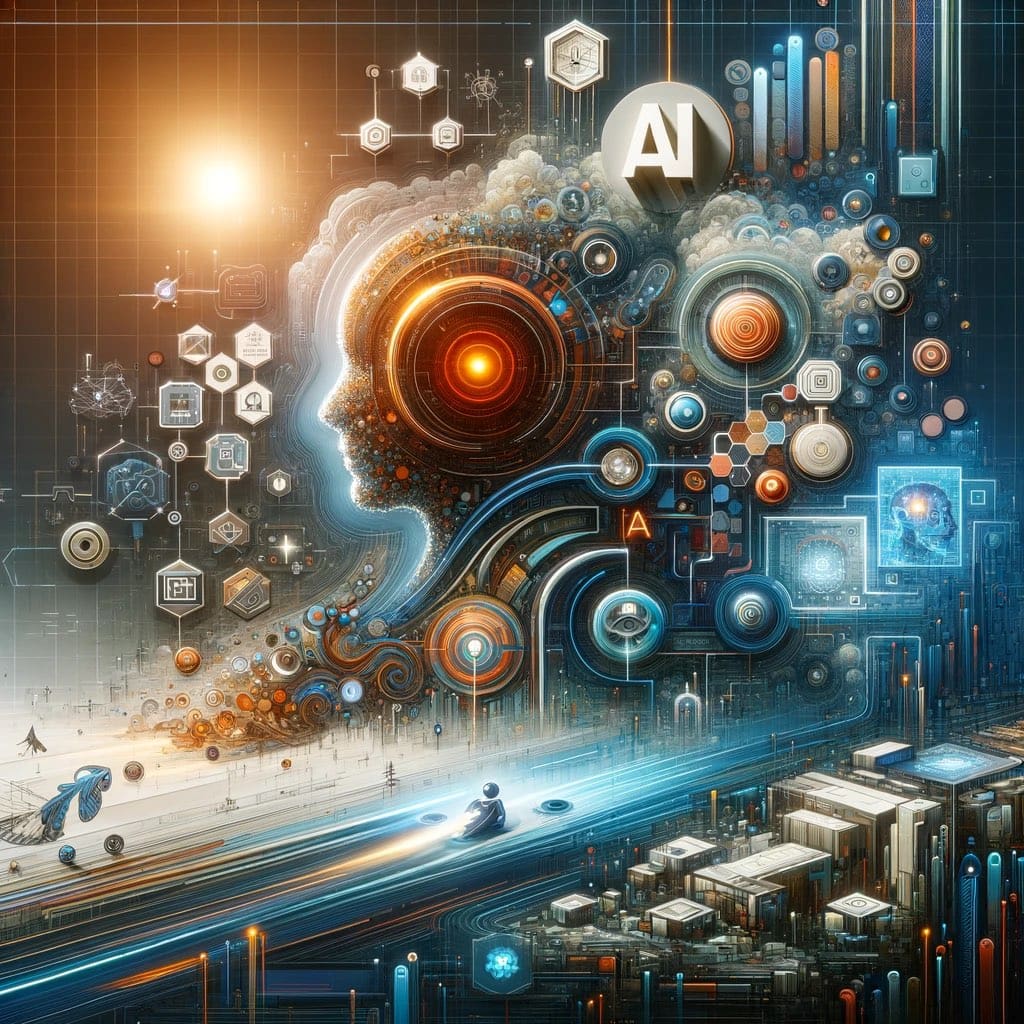
LLMs and the parts that make up AI, we may be closer to AGI than thought
Although we aren’t at a point yet where the code/parts are clever enough to achieve AGI (at least not publically), we may not be far away from that becoming the case.
The history of Open AI – the story so far…
OpenAI has seemingly appeared out of nowhere, going from being a relatively unheard-of company a number of years ago, to being a constant hot topic in the media.
The incredible events of 2023 are the result of the past decisions made, but before looking at that history, let’s pause and think about 2023.
Now – OpenAI present (2022 to 2023)
For those interested in technology and even those who aren’t, it’s hard to argue that this year has seen a huge change for AI but also a technology inflection point that will go down in history as a year to rival the internet in 1983:
But how did this happen? Here’s a brief timeline of events:
- On 30th November 2022, OpenAI released ChatGPT, making “AI” available to the public (for free)
- 5 days later, ChatGPT reached 1 million users, overtaking every other app in history
- By February 2023, only three months later, ChatGPT sets the record as having the fastest-growing growing user-base ever (although later overtaken later by Meta’s Threads release on 5th June 2023)
- By April 2023, OpenAI’s founder and CEO Sam Altman was named one of the top 100 most influential people of 2023 by Time Magazine
- During 2023 alone, we’ve seen major, almost unrepentant advancements in what ChatGPT can do, e.g.
- Voice Availability (Nov 21, 2023)
- Custom GPTs (Nov 6, 2023)
- Browsing Out of Beta, “Browse with Bing” in GPT-4 (Oct 17, 2023)
- DALL·E 3 Integration For Image Generation (Oct 16, 2023)
- Browsing for Plus Users (Sep 27, 2023)
- New Voice and Image Capabilities (Sep 25, 2023)
- Multilingual Support – Alpha (Sep 11, 2023)
- Custom Instructions for Free Users (Aug 9, 2023)
- Higher Message Limits for GPT-4 (July 19, 2023)
- Code Interpreter Beta (July 6, 2023)
- ChatGPT App for iOS and Android (May to July)
- Web Browsing and Plugins Beta (May 12, 2023)
- ChatGPT Plugins Introduction (March 23, 2023)
- GPT-4 Introduction for Plus Users (March 14, 2023)
- Introduction of ChatGPT Plus (Feb 9, 2023)
- Early 2023 Updates (Jan 9, 2023)
- Then on 17th November 2023 (days after the rollout of GPTs), Altman was fired and re-hired on November 21st 2023. More on this later!
We’ve seen crazy things happen in the world of Silicon Valley, but nothing even comes close to this.
So let’s sit back and understand how this led to the events of 2023.
OpenAI was founded (2015)
It may surprise you to learn that Elon Musk was one of the founders of OpenAI along with the current CEO Sam Altman, only to leave OpenAI and later invent his own AI bot to rival ChatGPT called Grok.
OpenAI Gym (2016)
OpenAI released its first major project, the OpenAI Gym for reinforcement learning research.
This is a toolkit that is designed to serve as a platform for researchers and developers to experiment and benchmark their reinforcement learning algorithms.
This was introduced as an open-source project, showing OpenAI’s commitment to openness and collaboration in the field of AI.
OpenAI Five (2017 & 2018) and OpenAI at the Dota 2 international tournament
OpenAI first became known to us back in 2017 while watching an eSports tournament. This was the Dota 2 International – an event where the best teams go head-to-head for a large multi-million dollar prize pool.
It is perhaps useful to preface this by saying that Dota 2 is a video game that has been described as a combination of American football and chess. It’s a complex online game with many different situations, scenarios, and synergies that can arise in a battle of 5v5.
At the Dota 2 international event, an AI was trained to compete 1v1 with professional Dota 2 players which resulted in some surprising and shocking demonstrations of the AI’s ability to learn and adapt.
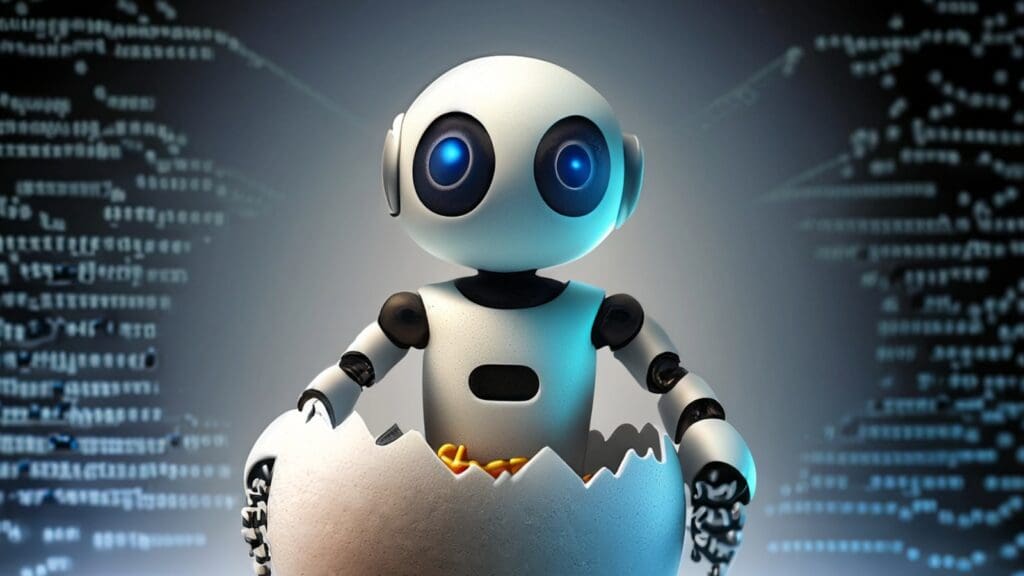
AI bots trained to learn the game
It was later revealed that while OpenAI bots were ‘learning’ the game, the simulations performed daily would allow for 300 years worth of Dota game experience to be simulated within 24 hours.
There have since been numerous examples of OpenAI outplaying their human opponents.
Two professional Dota 2 players react to OpenAI’s in-game ability
After OpenAI’s first appearance at the Dota 2 international, the team continued to work on the model which resulted in a team of 5 AI that could hold their own against professional teams. In some cases even winning. This AI team became OpenAI Five.
There is more information on the official OpenAI Five website and it’s a fascinating read, even for non-gamers.
GPT-2 (2019)
OpenAI released GPT-2 in February and was trained on a dataset of over 7,000 books and 8 million web pages.
This update to GPT allowed for full paragraphs of text with comprehensive replies to the user.
Despite being released in February 2019, it wasn’t available to general users until later in the year due to concerns over misuse. The delay was likely due to the team building a way to deal with the misuse potential of the upgrade which is understandable.
GPT-3 (2020)
This was the moment when things changed for OpenAI. The natural language aspect of the model’s improvements made it very believable and authentic for portraying convincing human-like conversations.
The API was also released allowing third-party developers to make their own intelligent applications. Businesses found the idea of GPT-type chat support agents to improve their troubleshooting processes and general customer support.
Other use cases range from using GPT-3 as a coding assistant to content creation and language translation services.
ChatGPT (2022)
In November 2022, OpenAI released ChatGPT, bringing generative AI to the mainstream.
Built on the foundation of previous AI models, ChatGPT was a significant step forward in creating accessible conversational AI for the public. Its ability to generate coherent and contextually relevant text responses introduced new ways for users to interact with AI—whether for education, entertainment, or productivity.
Unlike earlier GPT iterations, ChatGPT allowed users to experience the power of generative AI firsthand using a simple web-based interface (and for free to millions), demonstrating how conversational AI could impact daily life and productivity in the workplace.
The model’s launch also showcased OpenAI’s focus on deploying AI responsibly. ChatGPT initially rolled out with safeguards against misuse, emphasising OpenAI’s commitment to ethical AI deployment. Its popularity exploded with ChatGPT becoming the fastest-growing app of all time and paving the way for further advancements like GPT-4.
![Popularity of chatgpt - brilliance, betrayal & building tomorrow: the history of openai & its future (agi) [updated] Rise of ai and chatgpt adoption](https://opace.agency/wp-content/uploads/2023/03/Popularity-of-ChatGPT.jpg)
Image — @TheRunDownAI
GPT-4 & introduction of ChatGPT Plus a.k.a. ChatGPT-4 (2023)
In 2023, OpenAI released GPT-4 to ChatGPT Plus subscribers.
ChatGPT Plus was introduced around the same time as the GPT-4 model, which was a big incentive for fans of GPT-3 who wanted to get their hands on the latest version of GPT-4.
The full timeline of events can be found in our opening section above, although it’s important to mention here that ChatGPT is just one of OpenAI’s offerings.
Before ChatGPT Plus, we only had the free version, and at that time, OpenAI were trying to assess what users would pay for a premium version of ChatGPT.
However, users were also able to sign up OpenAI directly to access their playground and APIs for development using credits. You can find out more about the differences between ChatGPT and OpenAI’s playground here, but from recollection, we had access to the GPT-4 model slightly earlier using the playground, allowing users to easily switch between older models and the very latest model.
The firing and reappointment of CEO Sam Altman
The firing of Sam Altman sent shockwaves through the tech industry last week leaving many users and media outlets confused. Conspiracy theories and rumours were running wild the weekend of the firing leaving it almost impossible for followers to know what truly happened.
Initial reports stated that Altman had been employed by Microsoft, with other reports flying around, including Charles Hoskinson from crypto’s Cardano project inviting Sam Altman to do a partnership. To say the situation was confusing would be an understatement.
Not only was it impossible to know what had happened, or where Altman was going, the biggest question was “why?”.
The man named one of the top 100 most influential people by Times Magazine being fired by OpenAI’s board only days after one of the biggest updates to ChatGPT (custom GPTs), it made no sense at all.
By Tuesday 21st November, only days after the firing, OpenAI announced that Sam Altman was returning as CEO.
Events surrounding Altman’s firing
Let’s take a closer look at the events:
- November 17th – OpenAI announced the firing of Sam Altman. Later the same day, Greg Brockman (OpenAI co-founder) resigned. Many more employees also announced their resignation shortly after.
- November 18th – Pressure builds from investors unhappy with the recent firing and resignations of key team members of the company. Microsoft had recently promised to invest $13 billion into OpenAI just a short few months ago. Members of the team were assured that Altman and Brockman would be returning. After numerous employees were voicing their concerns at the recent changes.
- November 19th – Sam Altman returned to OpenAI offices. It was reported that Microsoft’s CEO (Satya Nadella) was an integral part of pushing for Altman’s return to OpenAI. More confusion came later as OpenAI announced a new interim CEO (Emmett Shear).
- November 20th – Microsoft announces that Altman, Brockman and other former employees from OpenAI would be joining Microsoft, adding to the confusion amongst investors and the community. This seemed to pour more fuel on the fire as even more OpenAI employees were threatening to quit on the spot. Later that day, the co-founder of OpenAI (Ilya Sutskever) signed a petition along with more employees, calling for the board to step down.
- November 21st – Sam Altman was officially back as CEO of OpenAI, with all but one of the previous board of directors remaining. For more on who was in and out, you can get the lowdown here.
After such a rollercoaster that wouldn’t look out of place on an episode of Silicon Valley, we still don’t know 100% why Altman was fired but reports seem to be firming up something that (if true) is remarkable.
Q* (Q-Star): The real reason for Altman’s firing
While it initially seemed as though Altman’s firing might be related to the release of GPTs, two days after the sacking of the re-hiring of Sam Altman, news started to circulate that Sam’s firing was related to “AI safety concerns” surrounding a breakthrough internally at OpenAI.
As reported by The Guardian here, along with various other sources including The Independent, Routers, and others, it seems that a new AI model, referred to as Q* (Q-Star), led to the temporary ousting of Altman. OpenAI researchers sent a letter to the board, expressing concern about the potential dangers of this powerful AI discovery.
The model, which showed promise in solving mathematical problems, raised optimism about achieving Artificial General Intelligence, with researchers believing that mastering math, a field where there’s usually only one correct answer, would indicate an AGI-level of advancement in the AI’s reasoning capabilities.
Key points surrounding Q* and why Sam Altman was fired
- Development of Q* (Q-Star): OpenAI was reportedly developing an advanced AI model called Q*, which demonstrated the ability to solve unseen basic maths problems, indicating progress towards AGI. Mastery of math by AI suggests advanced reasoning capabilities, akin to human intelligence.
- Safety concerns and staff reaction: The power and potential of Q* alarmed some OpenAI researchers, prompting them to write to the board about the potential threats to humanity. This concern was a key factor in the initial dismissal of CEO Sam Altman.
- Sam Altman’s ouster and reinstatement: Following the internal concerns and the letter to the board, Altman was removed from his position. However, his dismissal led to a strong reaction from the staff, with threats of mass resignations from over 700 employees. This reaction, coupled with support from Microsoft, OpenAI’s major investor, led to his reinstatement.
- The Quest for Artificial General Intelligence: OpenAI’s work on Q* is part of its broader goal to achieve AGI, which refers to AI systems that can perform a wide variety of tasks at human or superior levels of intelligence.
- Public and Internal Responses: The situation has sparked discussions about the pace of AI development and the ethical implications of rapidly advancing AI technology. Internally, the company acknowledged the project and the letter but did not comment on the specifics.
- Altman’s Vision and Progress: Despite the turmoil, Altman has been a key figure in pushing OpenAI towards significant advancements in AI, including the development of ChatGPT, one of the fastest-growing software applications in history.
Our view: this was already on the cards with Jimmy Apples AGI predictions
What’s most interesting here is that we produced this article originally on 21st June 2023 and predicted that AGI was just around the corner despite many believing we were years if not decades away from achieving this. On 2nd October we gave the article an update, theorising that AGI had already been developed internally at OpenAI.
At this point, there were no solid reports of this from outlets like The Guardian or The Independent, but mysterious claims from somebody called Jimmy Apples appeared online, somebody who had a track record of making accurate predictions about OpenAI and ChatGPT.
The claims made by Jimmy Apples implied that OpenAI were delaying the public release of their latest model. After making these claims, Jimmy Apples deleted his Twitter and Reddit accounts and vanished entirely from social media.
What’s even funnier is that Sam Altman himself reported about AGI being a potential co-worker replacement and claimed on Reddit that:
“AGI has been achieved internally.”
But then claims:
“Obviously this is just memeing, y’all have no chill, when AGI is achieved it will not be announced with a Reddit comment.”
Viewing these events and comments in relation to the Q* announcements, it seems hard to dismiss that they are all related.
What’s next for the future of OpenAI?
We’ve covered the OpenAI’s history, recent events around Altman’s firing and rehiring, and how this relates to Q-Star. So, what does all this mean for the future of OpenAI?
The death of OpenAI?
It’s hard to imagine now, but with the very real prospect of the founder and CEO, Sam Altman, Greg Brockman (co-founder), and potentially the entire workforce offering to leave and join Microsoft, this could have quite easily led to the death of OpenAI, or at least as we know it. It’s almost impossible to imagine the future of OpenAI without Sam Altman, and even more impossible to imagine without the 700 or more employees who offered to quit.
It’s possible that what happened was just a precursor to future events, which could lead to the actual death of OpenAI and reinvention as something else.
Time will tell, but for now, OpenAI is still alive and well with Sam at the helm.
OpenAI AGI?
The pursuit of artificial general intelligence (AGI) is central to OpenAI’s vision. Breakthroughs, such as Q*, suggest significant strides toward achieving AI’s general intelligence. By solving complex mathematical problems, OpenAI’s researchers have shown how these advancements could fundamentally reshape fields like healthcare, education, and engineering.
However, the OpenAI AGI journey has been fraught with challenges. Balancing the advancement of AI models with safety concerns is a recurring theme, as we’ve covered with the Q* revelation in 2023. With board members pushing for accountability and Sam Altman advocating for progress, OpenAI’s dual focus on innovation and responsibility remains critical.
GPT-5 vs o1 models?
In our original AGI article, we covered the o1 model and what this means for AGI.
Our latest model on what to expect from GPT-5 covers the very latest information on when to expect this upcoming release and what it’s likely to include.
What is GPT-5 from OpenAI: When Is It Coming, What Can We Expect & Will it be AGI?
Given its relevance here, a list of additional FAQs are added below that will help answer any questions.
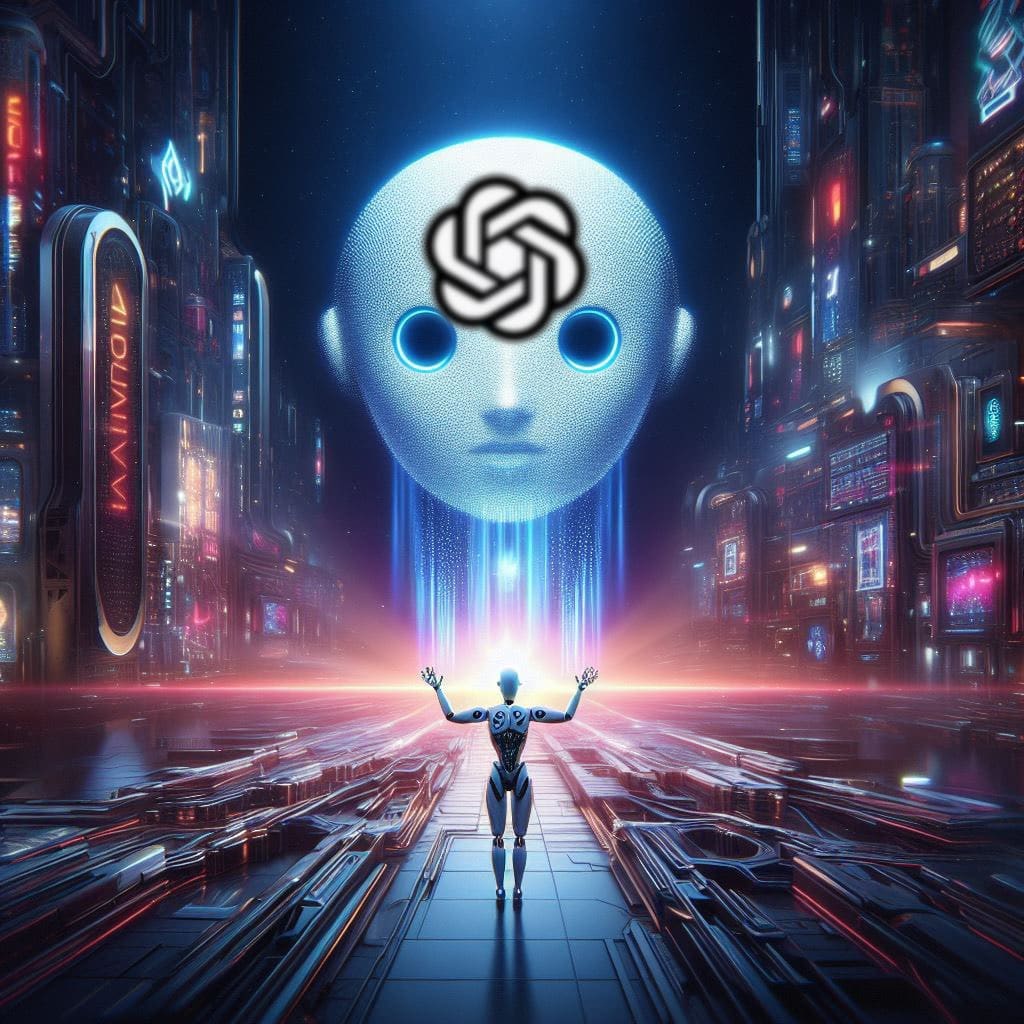
A vision of OpenAI’s future
OpenAI’s competitors
Since the release of ChatGPT, the AI industry has become a hotbed of competition, with major technology players and even dedicated AI companies challenging OpenAI’s dominance.
Elon Musk, a co-founder of OpenAI, re-entered the scene with Tesla’s Grok, an AI that prioritises real-time integration with social platforms. Musk’s departure and subsequent rivalry highlight just how dynamic the AI ecosystem has become.
Google’s Bard is another contender, with its focus on simplifying search and multimedia summaries. Meanwhile, Anthropic’s Claude has pushed the limits of token capacity, challenging OpenAI’s own GPT-4 Turbo.
These advancements and competition in the industry show how much language models and generative AI remain central to progress. Despite fierce competition, OpenAI’s history and continued leadership suggest it will remain a dominant force in the years ahead.
Elon Musk’s xAI and Grok
Elon Musk’s xAI has unveiled Grok, which has seen a lot of attention and is set to challenge ChatGPT as the go-to LLM solution with its ability to access real-time Twitter (X) information:
In a recent podcast with Lex Fridman, Musk put Grok through its paces, demonstrating the more light-hearted approach to serving enquiries with less emphasis on censorship and restrictions that many have criticised GPT for.
Elon and Lex test out Grok AI on fun mode
Grok positions itself as a conversational AI alternative, distinct for its less filtered and more “free-spirited” approach to user queries compared to OpenAI and Google’s offerings.
While Grok is still in its nascent stages, Musk’s influence and xAI’s focus on building AI models to rival GPT indicate significant long-term potential. Its direct integration with social media platforms hints at future use cases that could redefine AI in interactive and real-time settings.
Microsoft’s models and their collaboration with OpenAI
Microsoft has heavily invested in OpenAI, integrating GPT models into its products, such as Azure OpenAI Service, Microsoft 365 Copilot, and Bing AI.
The integration of OpenAI into the Microsoft ecosystem empowers everyday users and developers by embedding advanced AI capabilities directly into the tools they already use.
For example, developers leveraging Microsoft Azure can now seamlessly integrate OpenAI’s models into their apps and workflows, while Microsoft 365 Copilot transforms productivity tools like Word, Excel, and Outlook by automating tasks such as drafting emails, analysing data, and summarising documents. These enhancements save time, reduce repetitive work, and allow users to focus on higher-value tasks. Bing AI brings conversational capabilities to search, enabling more intuitive and personalised user interactions.
Beyond its OpenAI collaborations, Microsoft also invests in its proprietary AI models to improve enterprise solutions and enhance developer tools. Their focus on embedding AI into productivity platforms gives them a unique edge in the AI ecosystem.
Google’s Gemini (previously Bard)
In March 2023, Google introduced Gemini, a suite of next-generation AI models designed to integrate seamlessly with Google products.
While Bard was initially launched as an experimental conversational AI similar to ChatGPT, Gemini represents a more ambitious effort, combining multimodal capabilities (handling text, images, and other media) with cutting-edge NLP techniques.
In February 2024, Google rebranded Bard under the Gemini name, introducing a suite of enhanced features, including the powerful Gemini Advanced model and a dedicated mobile app. Gemini Advanced with Ultra 1.0 offers advanced capabilities in coding, logical reasoning, and creative collaboration.
The model excels in understanding nuanced instructions and maintaining context over longer conversations. Multimodal capabilities have also been introduced, allowing users to interact through text, images, and voice while integrating with Google’s ecosystem.
Subscribers to Google’s AI Premium Plan gain exclusive access to Gemini features in Gmail, Docs, and other apps, creating a seamless AI-powered productivity experience.
Available for both Android and iOS, the app extends the functionality of Gemini to smartphones, enabling users to capture images, generate captions, and request on-the-go assistance.
This multimodal, conversational assistant positions Gemini as a direct rival to OpenAI’s GPT offerings and Microsoft’s integrations.
Anthropic’s Claude
Despite Google’s own ventures into AI with Bard and AI-first search, Google is also a significant investor of Anthropic presumably to rival Microsoft’s investment in OpenAI.
AI Means The Death of SEO? Not So Fast – Let’s Look At How AI is Shaping The Future of SEO
I’ve tested Anthropic’s Claude 2 model with its massive 100K token limit. It’s good, but similar to Bard, trails behind ChatGPT, failing to offer the same experience or degree of innovation. That said, its 100K token limit is a major bonus, with its ability to process vast amounts of information (over three times the amount of GPT-4’s 32K model).
As with anything in the world of AI, it’s a competition. Earlier this month, OpenAI announced GPT-4 Turbo with a 128K model, only to be outdone again by Anthropic who announced Claude 2.1 with an incredible 200K token limit.
Meta’s LLaMA
Meta’s most notable AI development is the LLaMA (Large Language Model Meta AI) series, which has emerged as a significant competitor to OpenAI’s GPT models. Designed as open-source models, LLaMA and its successors aim to democratise access to large-scale AI tools while focusing on efficiency and scalability. LLaMA’s AI models currently consist of:
- LLaMA 1: The initial release of LLaMA was aimed at researchers and offered compact yet powerful language models optimized for academic and enterprise use.
- LLaMA 2: Released as open-source in 2023, LLaMA 2 enhanced capabilities, offering competitive performance against GPT-3 and GPT-4 in many benchmarks.
Unlike OpenAI’s focus on proprietary systems with controlled access, Meta’s commitment to open-source solutions through the LLaMA series aligns more closely with community-driven research. However, Meta’s approach faces challenges in maintaining control over how its models are used, particularly in areas like misinformation and malicious AI applications.
Other key differentiators are that Meta integrates its AI models into platforms like Facebook, Instagram, and WhatsApp for content moderation, personalised recommendations, and advanced advertising analytics. This practical application of AI distinguishes it from competitors other competitors.
Other OpenAI competitors
Of course, OpenAI, X, Google and Microsoft aren’t the only players in the AI field. Other AI companies include:
- Cohere: Known for its focus on natural language processing (NLP), Cohere offers large-scale language models optimised for enterprise applications such as text summarisation, semantic search, and sentiment analysis.
- AI21 Labs: The creators of the Jurassic language models, AI21 Labs specialise in natural language understanding and text generation, offering an alternative to OpenAI’s GPT models.
- Stability AI: Best known for its Stable Diffusion image generation model, Stability AI provide large language models and open-source AI tools for research and enterprise.
- Hugging Face: Primarily a hub for AI developers, Hugging Face collaborates with organisations to create advanced AI models and provides tools like the Transformers library, a crucial resource for implementing NLP solutions.
- Aleph Alpha: A European AI company that focuses on multilingual and culturally adaptive language models, setting it apart in the global AI competition.
- Inflection AI: It’s Pi chatbot, Inflection AI aims to create highly personal and empathetic AI assistants with a focus on ethical AI which aligns with OpenAI’s approach, albeit at a smaller scale.
The role of OpenAI in shaping the AI industry
OpenAI stands as one of the most influential AI companies out there, continually setting benchmarks that define the AI industry as a whole.
Its focus on developing cutting-edge AI models has inspired innovation while sparking discussions about ethical AI deployment. Unlike its competitors, OpenAI’s decision to transition from a non-profit entity to a capped-profit organisation reflects a strategic move to balance its mission with financial sustainability.
Through collaborations with other AI companies and consistent advancements in language models, OpenAI has cemented its position as a leader in the space. By integrating generative AI into mainstream applications, it has not only transformed industries but also demonstrated the power of AI to benefit humanity. As competitors like Tesla’s Grok and Google Bard race to catch up, OpenAI’s blend of technological innovation and ethical considerations keeps it ahead of the curve.
Frequently Asked Questions
What is Artificial General Intelligence?
Artificial General Intelligence in AI refers to the capability of an Artificial Intelligence system to think like a human and perform any intellectual task that a human can do.
If it hasn’t already been achieved internally, OpenAI, with its rapid advancements is moving closer to achieving AGI. This is highlighted by its development of AI models like Q* that show promise in mathematical problem-solving, something that weak or narrow forms of AI (LLMs) can’t do effectively.
How has OpenAI evolved over the years?
OpenAI, initially a relatively unknown entity, has become a media sensation. Its significant milestones, like the release of ChatGPT, GPT-4, and advancements towards OpenAI AGI technology, have marked its evolution into a leading force in AI research.
Will AGI happen and what does this mean for the future of OpenAI?
While a precise date is uncertain, some speculate that it’s already been achieved internally. Most believe that Q* means OpenAI AGI is closer than many anticipated. However, it seems the large majority still believe we are years away from achieving real AGI and most likely decades, with this article predicting a date of 2050.
The future of OpenAI hinges on navigating these advancements responsibly, balancing innovation with safety concerns, and keeping its stakeholders happy.
What was the impact of Sam Altman’s firing and rehiring at OpenAI?
Sam Altman’s temporary dismissal from OpenAI in 2023, largely due to concerns over AI safety, highlighted the ethical complexities in advancing AI but his return signalled a commitment to balancing innovation with responsibility.
What role does ChatGPT play in the journey towards AGI?
ChatGPT is a part of OpenAI’s product suite and plays a crucial role.
Although not AGI itself, ChatGPT is a sophisticated language model and demonstrates the potential of AI systems evolving beyond current capabilities.
The latest addition of custom GPTs is one step towards this goal.
Is there a difference between AI and AGI?
Yes, AI refers to machines performing specific tasks intelligently. Right now what we perceive as AI is actually a form of ‘weak AI’ or ‘narrow AI’.
Artificial General Intelligence on the other hand represents a technology that is capable of understanding, learning, adapting, and applying knowledge across a wide range of tasks. For AI to become AGI it needs to demonstrate a level of human intelligence.
What are the implications for society?
AI in general, but especially AGI, has the potential to revolutionise industries and impact every individual on the planet.
Its potential to transform healthcare, education, and various other sectors is immense but it also raises significant ethical and safety concerns, which reinforces the need for certain controls and limitations to be put in place.
What OpenAI AGI challenges are ahead?
OpenAI faces the challenge of ensuring AI safety, addressing ethical concerns as it progresses towards AGI, and ensuring its users, stakeholders, investors and community are all on board with any advancements.
The controversy surrounding the development of Q* and the firing of Sam Altman demonstrates the importance of responsible innovation and ensuring all parties are kept in the loop.
How does the public view OpenAI’s progress towards AGI?
Public opinion on OpenAI’s progress is mixed, with excitement about the potential benefits and serious concerns about the risks of such powerful technologies being allowed to exist.
Conclusion
So much has changed in the AI space but one thing has been constant – it’s such a new, exciting and transformative set of technologies.
These technologies stand to increase efficiency for businesses across multiple industries and one player stands out head and shoulders above all others right now, OpenAI.
Other than the dangers of advanced AI, one concern is the eventual stagnation of the technology due to filters and limitations imposed on the system to stop offensive content. It would be such a shame to see these kinds of limitations delay or even prevent progress.
It will be an exciting few months following the upcoming developments from OpenAI and its competitors.
What do you think about the recent events at OpenAI? Have we covered the history and future of OpenAI adequately? Leave us a comment in the comment section below or join us on social media.
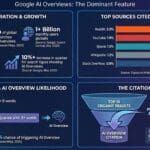

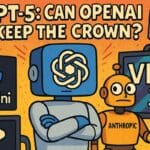

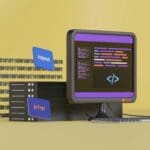
0 Comments